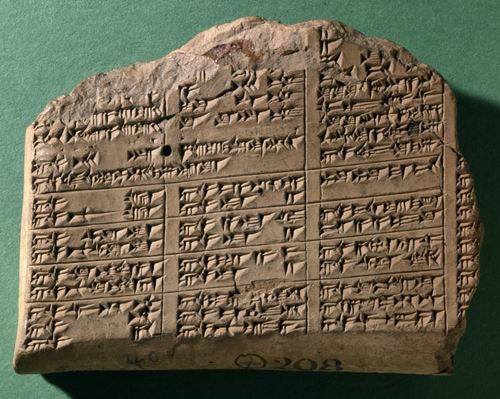We start this week at the end, with the modern discovery of the city of Ur. The name Ur is synonymous with the idea of an ancient city. It also happens to be the first of this week’s ancient cities I saw on video, when it made an appearance in a documentary about the Flood Tablet. It looked almost new. How could that be? I was utterly astounded. But the documentary moved on, and so did I. Remembering that first impression today, I came across a mention of some works carried out that mean that what you can see today is almost completely modern reconstruction. Criminally, though undoubtedly not the crime for which he’ll be remembered, the entire ziggurat was encased in modern brickwork by one Saddam Hussein in the 1980s.
Going back a few centuries, Pietro della Valle was a book collector and linguist born in late 16th century Rome. Early in the 17th century, he joined an expedition to fight the Spanish corsairs in North Africa, and on his return settled in Naples. Very much depressed after an unsuccessful love affair, a friend persuaded him that he should travel. And travel he did. A religious man, he set out on a pilgrimage to Jerusalem. But on the way he took in sights from Malta to Calcutta and everywhere in between, with no objective in mind other that seeking “glory”. Like a newly-minted Chelsea or Man City fan when the billionaire’s money comes in.
During his travels in the deserts of the south of Iraq he was tattooed (consensually) by Bedouins before they (less consensually) stole his fine Italian underwear. He was taken by amused locals to a couple of archaeological sites where he collected pieces of tile and brick, noting the strange inscriptions on some of them. The picture today is not from Ur, but is della Valle’s drawing of some cuneiform writing he saw at Persepolis (which looks to me like Old Persian script), and was the first cuneiform inscription published in Europe. He also collected a sample of bitumen. One of the sites where he collected these items was Tell al-Muqayyar, the name in Arabic means “mound of bitumen”, and it must have been something to behold out there among the dunes. I wish I could spend more keystrokes on della Valle – I urge you to seek out more on his travels – but his time in Mesopotamia was quite limited. He spent much more time and ink railing against the “barbarians” of Turkey and engaging the Persians in intellectual and religious debate, all the while writing detailed letters to his friend back in Italy. He did however visit the Behistun Inscription, and copied parts of it.
There is a wonderful drawing by William Loftus who rediscovered the site in 1850, over 200 years after della Valle. Bedouins on foot and on horseback cluster in the foreground, perhaps descendants of those who tattooed and debriefed poor Pietro. The ziggurat is almost completely buried in the sands but the straight walls, which before Saddam Hussein’s efforts were last refurbished in 6th century BC by Nabonidus, are clearly intact after their centuries under the dunes. Perhaps some far-off archaeologist will see these newer works in the same way as we now see those of Nabonidus, interpreting Hussein’s motivations, and drawing connections to the oil wars of the late 20th century. For now though, it’s a sad loss that those walls are hidden from modern eyes, more surely than under a thousand years of accumulated sand.

